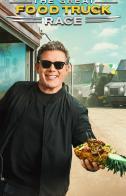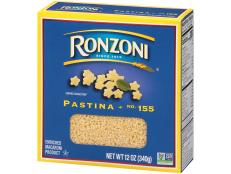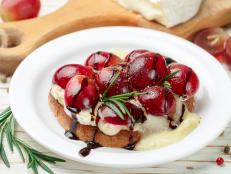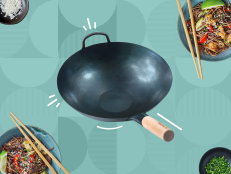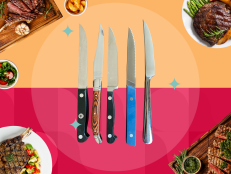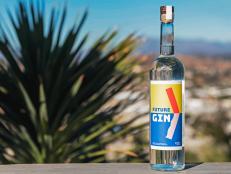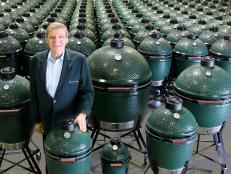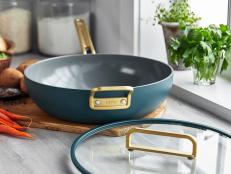The French Recipe That Divided Julia Child's Kitchen
The second season of Julia explores the drama behind a now-classic dish.
%20(2).jpeg.rend.hgtvcom.91.91.suffix/1699381350148.jpeg)

Seacia Pavao/Max
Editor’s Note: Max and Food Network are sister brands of parent company Warner Bros. Discovery.
This article contains spoilers for the series Julia.
Mark Twain once famously wrote that there is no such thing as a new idea. He also never met Julia Child.
In 1961, when Child published her first book, Mastering the Art of French Cooking, it launched her 40-year cooking career and a national food revolution. Through her writing, recipes and television presence, she completely upended American culinary culture, repositioning collective compasses away from convenience and toward craft. I was lucky enough to grow up in a post-Julia-Child food world, where going to a French culinary school and cooking in restaurants struck my friends as glamorous (spoiler: it’s not) rather than grueling.
But wakes always follow a sea change. One person’s brand-new idea is another’s inheritance—and someone else’s departure from cherished traditions. Was Julia Child uniquely situated to overhaul American culinary ideals? Or was she merely wielding a whisk in the right place at the right time? And what happens to revolutionaries when the causes that were previously avant-garde become canon?

Jonathan Melendez
These questions underscore the second season of the Max Original Julia, a fictional series based on Child’s life. (The first 3 episodes are currently streaming on Max, new episodes air on Thursdays.) In the first episode, Child and Simone Beck, one of her Mastering the Art of French Cooking co-authors, encounter a French dish called loup en croute, or sea bass in puff pastry.
For the fictional characters and real-life students of culinary history, loup en croute is more than a meal. The dish consists of a whole sea bass baked within a fluffy pastry decorated to look like a fish and served with a vibrant sauce, but that’s not even the most dramatic thing about it. Created by Chef Paul Bocuse, loup en croute is emblematic of nouvelle cuisine, France's upstart culinary movement from the late 1960s and 70s.
“Nouvelle cuisine wasn’t as heavy as traditional French food, presentation was more important, and it had a flair for drama and theater that Julia naturally had as a television personality,” explains Daniel Goldfarb, the creator and executive producer of Julia. Nouvelle cuisine tended to feature fresher ingredients than the previous era’s culinary movement, haute cuisine, and cooking times were often shorter.

Sebastein Gonon/Max
In Julia, the arrival of that pastry-wrapped fish and the nouvelle movement reveals a schism between Child and Beck. Child is immediately entranced by the loup en croute. Ever the enthusiastic student of French cooking, she coos and claps as the fish is plated, asks about its ingredients and tries to recreate it in her home kitchen and at her culinary school.
“What makes Julia such a delightful character is she’s always open to something new: new experiences, new adventures,” says Goldfarb. At this point in the real and fictional Child’s life, neither Bocuse nor nouvelle cuisine were household names. “Everything about it was new for Julia and really thrilling.”
Make Loup en Croute At Home
This episode inspired the Food Network Test Kitchen to create our own take on Bocuse's iconic loup en croute. Streamlined for home cooks, our version uses branzino filets rather than a whole sea bass so that everyone can get a taste of nouvelle cuisine in their kitchen.
Beck, on the other hand, was born in France and steeped in haute cuisine. When she and Child first see the loup en croute, she’s suspicious of the playful plating and dismisses the dish as more sizzle than steak. Throughout the episode and season, she discourages Child from pursuing the recipe.

Sebastein Gonon/Max
Similar reactions proliferated in the real-world food establishment for years. In a 1979 New York Times article, “The Not-So-New Nouvelle Cuisine,” writer Mimi Sheraton uses nearly 2,500 words to ponder whether nouvelle cuisine is a positive or negative shift for restaurants, for France and maybe even for humankind.
“It must be said that the nouvelle cuisine does reflect what the market wants and does make a timely and enriching contribution to gastronomy... But the nouvelle is not the sole, infallible answer to good cooking,” she writes. “And because it is fashionable and so can fetch high prices, it may well drive out the solidly satisfying, quintessentially French cuisine bourgeoise, a danger that seems imminent as one travels through France today.”
This handwringing over rapidly changing cultural landscapes wasn’t limited to France or even food, explains Chris Keyser, Julia’s showrunner and executive producer. “It’s a constant conversation between that generation that fought World War II together: whether the world is changing and whether it’s changing in a good way or not.”

Sebastein Gonon/Max
Generations and social mores evolve, but these dialogues continue. Then, as now, onscreen and off, cultural upheaval always excites some people and threatens or unsettles others.
With hindsight, the reactions of Child, Beck and maybe even Sheraton to nouvelle cuisine might seem almost quaint. After all, now we know that nouvelle cuisine rendered neither haute cuisine nor the entirety of France obsolete: When I went to culinary school in the 2010s, weeks of curricula were devoted to haute and nouvelle cuisines, among other eras of French cooking. To me, loup en croute is more of a classic dish than a cutting-edge provocation.
To some Julia viewers, Julia Child herself might seem like an established food figure rather than an underdog or enfant terrible. The second season broaches the subject. As episodes progress, we watch as this seeming bastion of all-American open-mindedness runs into the limits of her own progressivism when paired with a forward-thinking producer on her television show back home in Massachusetts.
That’s the thing about progress. It’s entirely subjective. Anyone who’s seen their long-forgotten high school wardrobe reincarnated on couture runways can attest that trends are cyclical, and the only constant is change.

Jonathan Melendez
In 1977, more than 70 years after Mark Twain decreed that novelty was a thing of the past, the poet Audre Lorde issued a response of sorts. “There are no new ideas. There are only new ways of making them felt,” she wrote.
Whether you’re reading American literature, studying French gastronomy or watching TV, Lorde’s theory resonates. How we feel about things depends on countless factors and is also always in flux.
Besides, as Julia shows, an idea doesn’t have to be new to change the world. You just have to be willing to try it.





